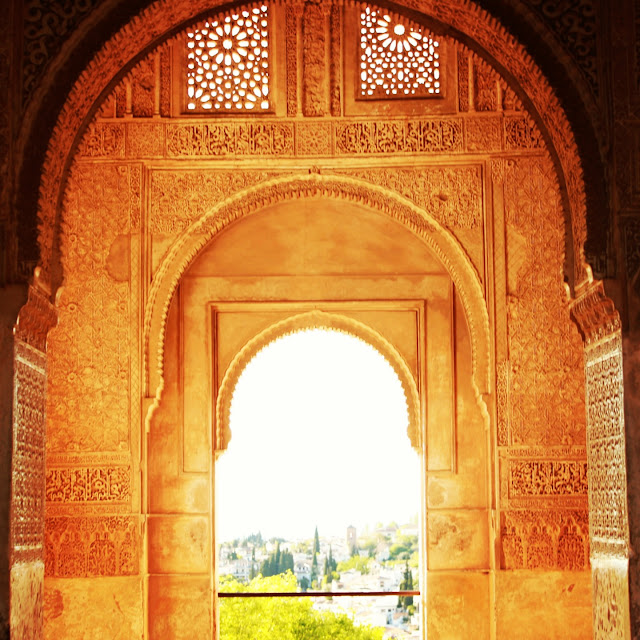Cristina Iglesias is one of Spain's most important sculptors - after visiting Metonimia, the Museo Reina Sofía's recent retrospective of her work, I noticed that even the meeting rooms in my office are adorned with photos of her famous hanging corridors.
 |
| Corredor suspendido I (Suspended Corridor I), 2006 |
Metonimia is Spanish for metonymy, when the name of one object or concept is used to describe a related one. The exhibition's blurb says that Iglesias thinks of sculpture as a way to question the relationship between architecture and space - what is physical defining what is not.
 |
| Sin título (Pasillo vegetal III) (Untitled (Vegetation Corridor III)), 2008 |
Her sculptures integrate with the space around them, like enormous, isolated fragments of buildings.
My favourites were her suspended ceilings and hanging corridors. There's something about an enclosed space that's irresistible - the corridors of intricately woven bronze invited you to explore inside and view them from all angles.
 |
| Corredor suspendido II (Suspended corridor II), 2006 |
 |
| Corredor suspendido III (Suspended Corridor III), 2006 |
The walled pavilions were arranged in a deliciously frustrating order - the first is a closed space, leaving you inexplicably desperate to get inside, and the increasingly expansive mazes of walls become more and more open and complex, until you can get lost in them.
 |
| Impressions d'Afrique II (Impressions of Africa), 2002 |
A beautiful exhibition to lose yourself in, quite literally.
http://cristinaiglesias.com/
http://www.museoreinasofia.es/en/exhibitions/cristina-iglesias-metonymy





















































